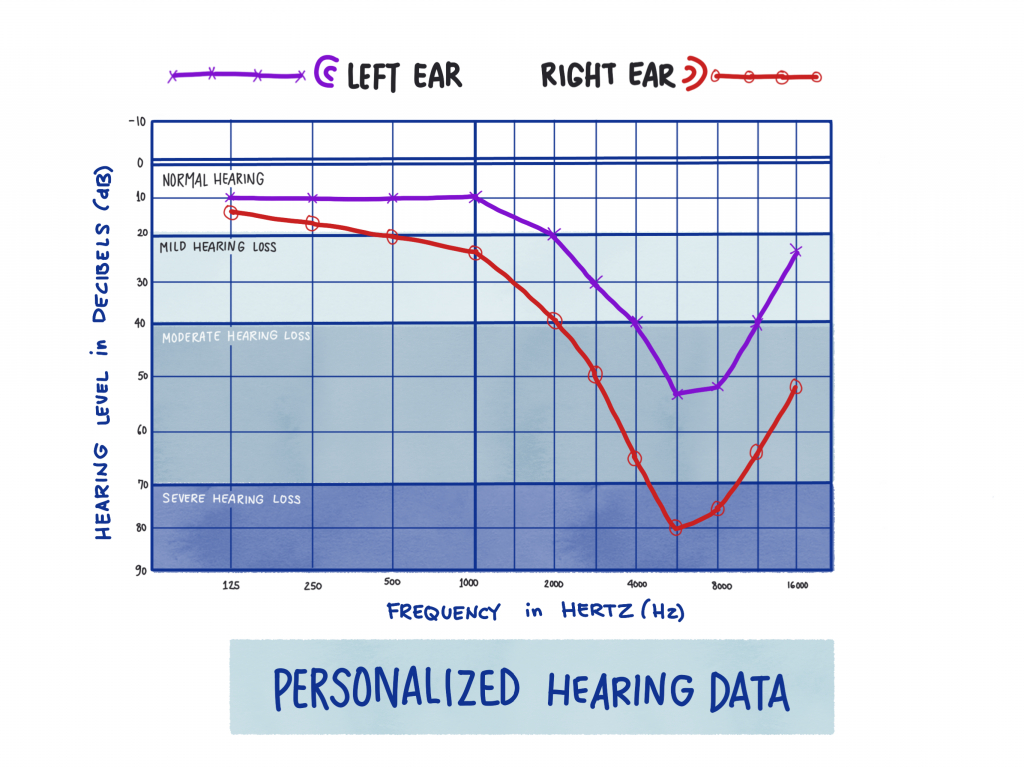There are different degrees of severity for hearing loss. In mild cases the loss only amounts to few dB of sensitivity, while in moderate cases the loss is between 20 and 50 dB and can be fully or mostly corrected with hearing aids. In the most severe cases, the loss can be as high as 80 dB and is essentially unrecoverable. Additionally hearing loss can involve all frequencies or only some subsets of them; in general, when fewer frequencies are affected, the loss will be not as severe. Hearing loss is sometimes hard to represent and fully understand, especially for the people affected and their loved ones. Stating a decreased sensitivity to sound levels in dB, while scientifically accurate, simply doesn’t paint the whole picture. That’s why we were inspired to create a tool to visualize it.
From a medical standpoint, there are three kinds of hearing loss:
- Conductive hearing loss
- Sensoneural hearing loss
- Mixed hearing loss

